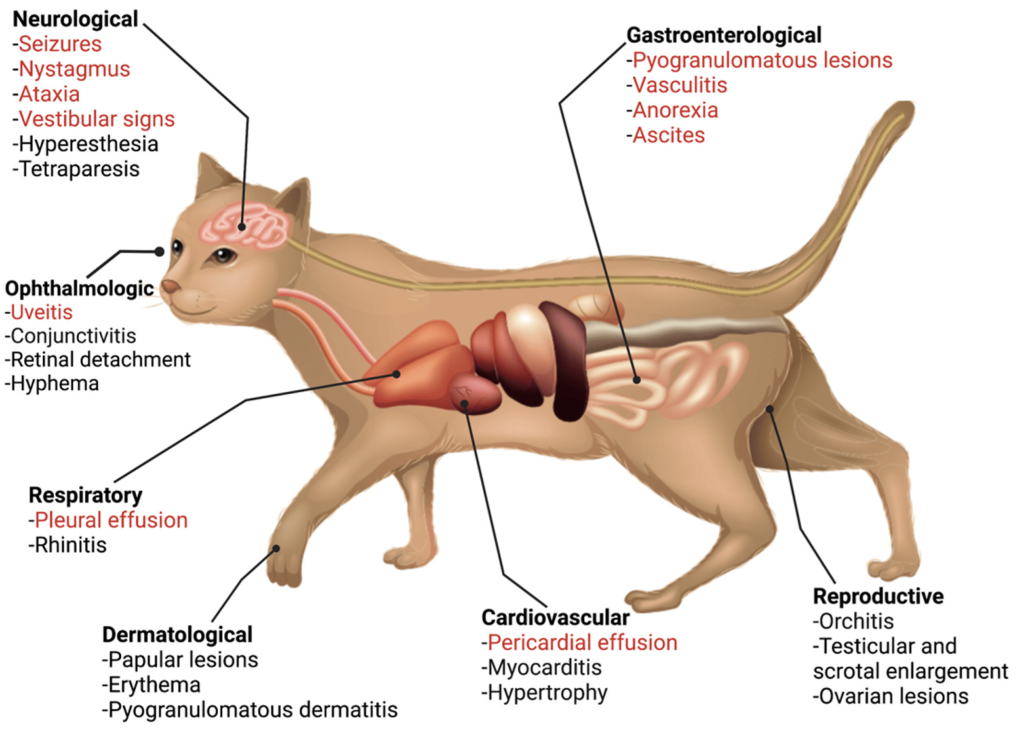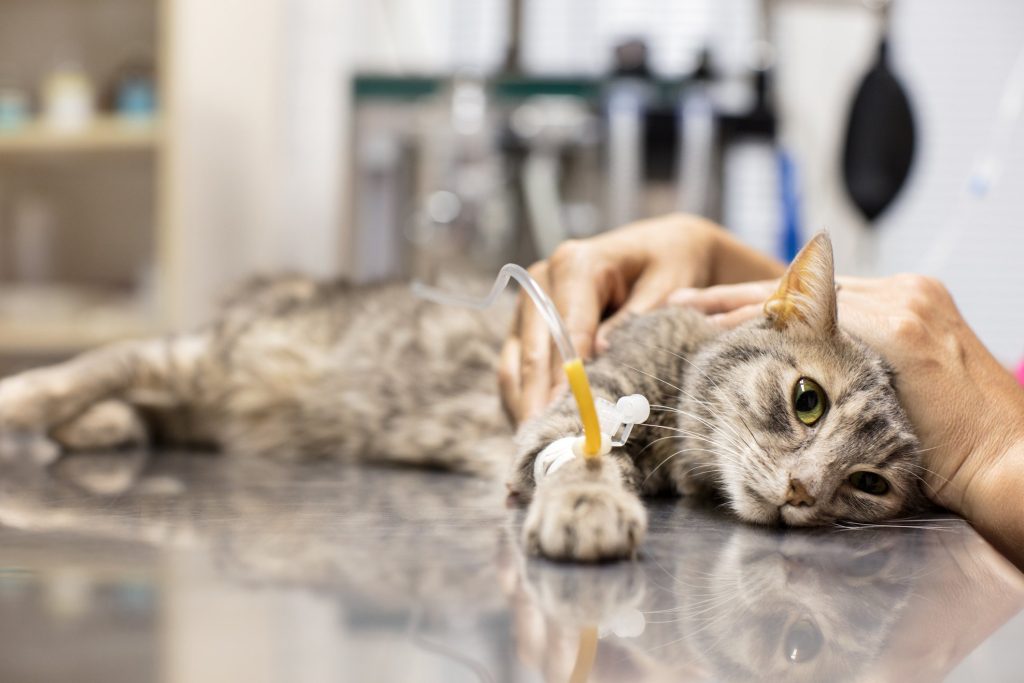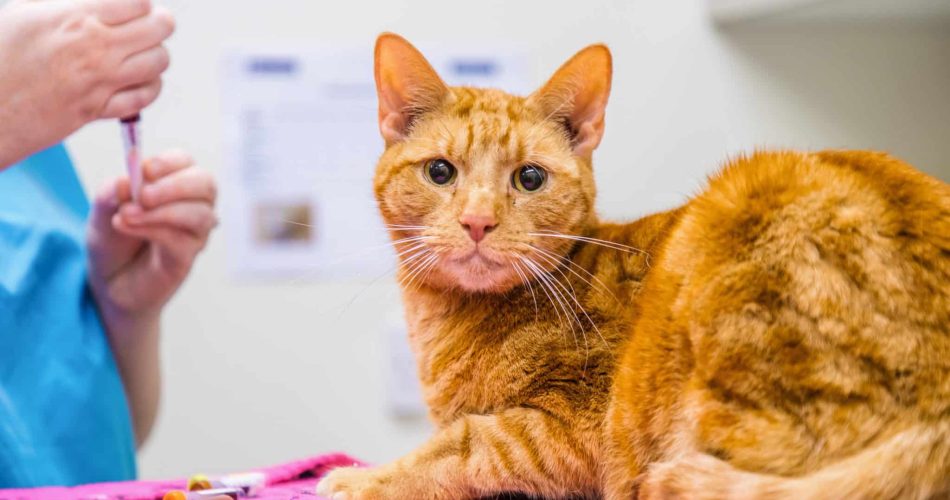Feline Infectious Peritonitis (FIP) is one of the most complex and dangerous diseases that can affect cats. It is caused by a mutation of the feline coronavirus (FCoV), which, in certain circumstances, can lead to a severe, life-threatening condition. FIP is difficult to diagnose and treat, and unfortunately, it remains one of the leading causes of death in cats. While there has been significant progress in understanding and managing FIP, it still poses a serious risk to cats, especially in multi-cat households or environments like shelters.
In this article, we will explore what FIP is, how it affects cats, the symptoms to watch for, and the available treatment options. We will also discuss the dangers of the disease and what steps you can take to protect your cat from FIP.
What is Feline Infectious Peritonitis (FIP)?
FIP is a viral disease caused by a mutation of the feline coronavirus. In most cases, feline coronavirus only causes mild gastrointestinal issues, but in some instances, the virus mutates and spreads beyond the intestines. Once the virus mutates, it triggers a severe inflammatory response in various organs, such as the liver, kidneys, eyes, and brain. This inflammation causes serious damage to the affected organs and often leads to organ failure.
FIP is most commonly seen in young cats under the age of two, and it is particularly dangerous in cats with compromised immune systems. The disease is highly contagious, and while it doesn’t spread through the mutated virus, the underlying coronavirus can be transmitted between cats through feces or saliva. As such, FIP is most prevalent in environments where many cats are housed together, such as animal shelters, catteries, or multi-cat households.
The Two Forms of FIP
FIP presents itself in two primary forms: the wet form (effusive) and the dry form (noneffusive). Both forms are serious and potentially deadly, but they manifest differently.
The wet form of FIP is characterized by the accumulation of fluid in the abdomen or chest cavity. This fluid buildup can cause the abdomen to appear bloated and lead to breathing difficulties. Cats with wet FIP may also experience severe weight loss, lethargy, and difficulty breathing due to the pressure on the organs caused by the fluid. This form progresses rapidly and can be fatal within a matter of weeks if not treated.
The dry form of FIP does not involve fluid accumulation but leads to the development of inflammatory lesions or masses in various organs, such as the liver, kidneys, and brain. This form can be more difficult to diagnose because the symptoms tend to develop slowly and may not be as obvious as those of the wet form. In dry FIP, cats may experience neurological symptoms, such as tremors, seizures, or lack of coordination, as well as eye problems like swelling or vision impairment. Though it progresses more slowly than the wet form, dry FIP is just as deadly if left untreated.

Common Symptoms of FIP
FIP symptoms can vary greatly depending on the form of the disease, but there are several signs that may suggest your cat is suffering from this condition. Some of the most common symptoms include fever that does not respond to antibiotics, weight loss, poor appetite, lethargy, and a bloated abdomen (in the case of wet FIP). Cats with wet FIP often exhibit difficulty breathing and rapid breathing due to fluid accumulation in the chest.
For cats with dry FIP, symptoms tend to develop more gradually and can include eye issues, such as redness or swelling, and neurological problems like head tilting, seizures, or uncoordinated movements. Some cats may also experience jaundice, which is the yellowing of the skin and eyes, due to liver involvement. The disease can be particularly tricky to diagnose because many of these symptoms overlap with those of other conditions.
If you notice any of these symptoms in your cat, it is essential to seek veterinary attention as soon as possible. Early diagnosis and treatment can improve the prognosis, though FIP is a challenging disease to manage.
How is FIP Diagnosed?
Diagnosing FIP is not straightforward, as its symptoms can be mistaken for other illnesses. There is no single test to confirm FIP, so veterinarians typically rely on a combination of clinical signs, laboratory tests, and imaging studies to make a diagnosis. Blood tests may reveal elevated levels of certain proteins associated with FIP, and a fluid sample from the abdomen or chest may show characteristics that suggest the disease.
However, a definitive diagnosis often requires more specialized tests, such as polymerase chain reaction (PCR) testing, which detects the presence of the virus’s genetic material in fluid or tissue samples. Because FIP shares symptoms with many other conditions, including bacterial infections, cancer, and other viral diseases, it can sometimes be misdiagnosed, which can delay treatment and worsen the cat’s condition.
The Dangers of FIP
FIP is one of the most dangerous diseases for cats due to its rapid progression and the severe damage it causes to multiple organs. The mutated virus attacks the immune system, and the inflammatory response can result in irreversible damage to the liver, kidneys, brain, and eyes. Cats with the wet form of FIP are at risk of sudden and severe organ failure, while cats with the dry form can suffer long-term neurological damage and permanent vision loss.
FIP is also difficult to treat, and until recent years, it was considered a fatal disease. The prognosis for cats diagnosed with FIP was traditionally poor, with most cats succumbing to the disease within weeks or months. However, advances in antiviral treatments have shown promise, offering hope for affected cats, particularly when diagnosed early. Still, FIP remains a major challenge for veterinarians and cat owners alike.
Treatment for FIP
There is no cure for FIP, but recent advancements in antiviral medications have provided some hope for affected cats. The antiviral drug GS-441524, a close relative of remdesivir (a drug used to treat COVID-19 in humans), has shown remarkable results in treating cats with FIP. GS-441524 works by inhibiting the replication of the virus, reducing the inflammation that causes damage to the organs. Cats treated with this drug often experience significant improvement, and many recover fully.
Treatment with GS-441524 typically involves administering injections or oral doses for a period of several weeks to months, depending on the severity of the disease. However, access to this drug can be limited, and it may be costly for pet owners. Some cats may also require additional supportive care, such as fluid therapy and nutritional support, to help them recover.
It is important to note that while antiviral treatments have shown positive results, FIP is still a serious disease, and early detection is crucial for the best chance of a successful outcome. The sooner treatment is started, the better the chances of recovery, but it is still not guaranteed in every case.
Preventing FIP
Currently, there is no vaccine available for FIP, making prevention challenging. However, there are steps you can take to reduce the risk of your cat contracting feline coronavirus, which can potentially mutate into FIP. The most effective preventive measure is to minimize the spread of feline coronavirus by maintaining a clean environment and limiting your cat’s exposure to other cats, particularly in multi-cat households or shelters.
Regular cleaning of litter boxes, food bowls, and bedding is essential in preventing the spread of the virus. If you have multiple cats, it is important to practice good hygiene and isolate any sick cats to prevent the virus from spreading. Keeping your cat indoors and reducing their exposure to potential carriers of the virus is also a helpful strategy.

Conclusion
Feline Infectious Peritonitis (FIP) is a dangerous and often fatal disease caused by a mutation of the feline coronavirus. While it remains a serious threat to cats, recent advances in antiviral treatments have provided new hope for affected cats. The key to improving the prognosis for FIP lies in early detection and intervention. If you suspect your cat may have FIP, it is essential to seek veterinary care as soon as possible. With the right care and treatment, many cats with FIP can survive and recover, but the disease remains a significant challenge for pet owners and veterinarians alike. Taking preventive measures, such as reducing exposure to the virus, can help protect your cat from FIP.
